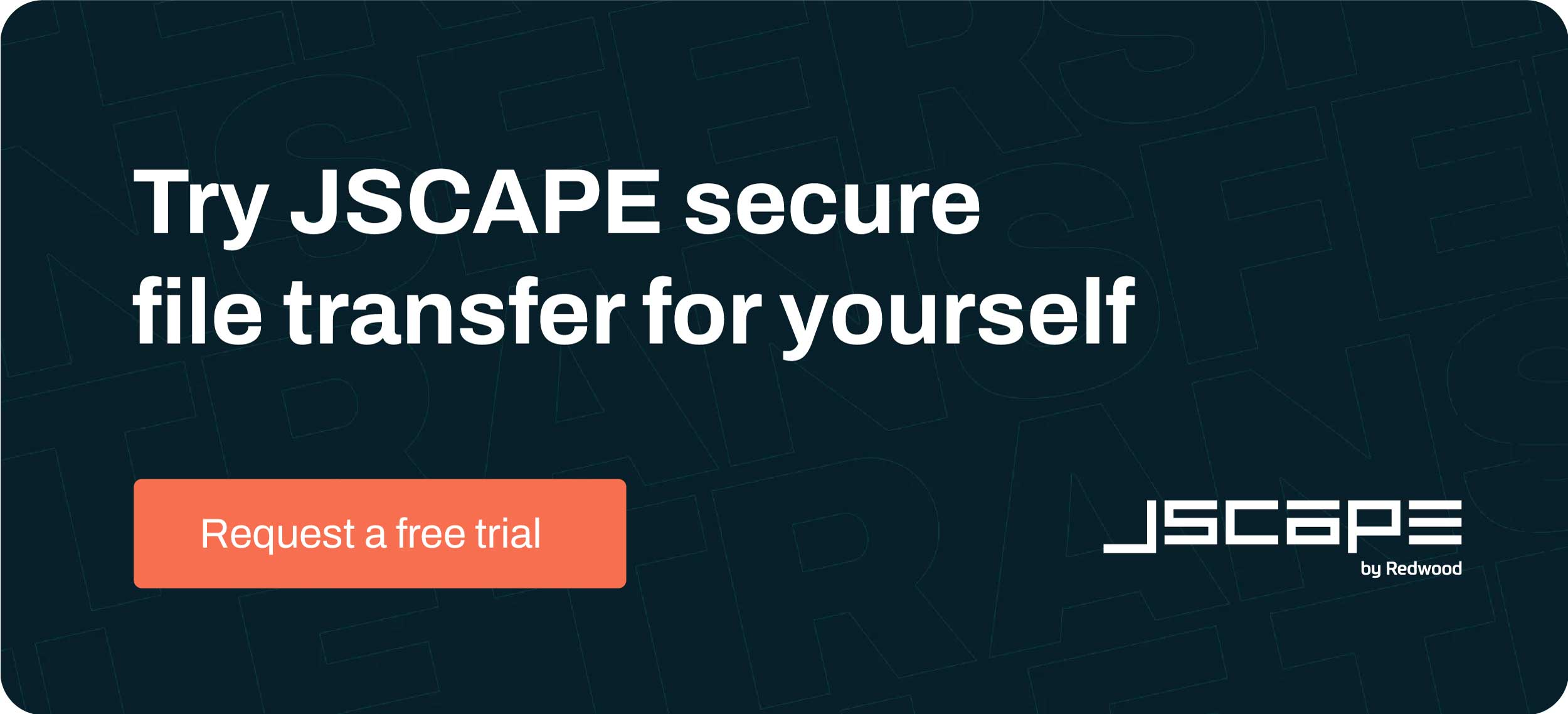Secure data transfers are pivotal for maintaining a competitive advantage in our swiftly evolving digital landscape. As cybersecurity challenges rise and the shift towards cloud-based ecosystems continues, your strategy for secure data streaming becomes a cornerstone of business operations. It integrates advancements in data security and considers the implications of AI and automation on cybersecurity.
With a focus on advanced data streaming, JSCAPE emerges as a leader. It offers a solution that enables real-time data flow, eliminating the delays and security risks associated with traditional store-and-forward techniques. JSCAPE’s dedication to seamless and secure data transfers positions it as the top choice for businesses seeking top-shelf MFT solutions.
JSCAPE consistently tackles challenging issues such as data security and strategies against emerging digital threats. This post will uncover the key differences between data transfer methods, emphasizing the benefits of data streaming compared to traditional store-and-forward techniques.

Store-and-forward
Store-and-forward, a longstanding secure data transfer method, temporarily stores data at several points before reaching its ultimate destination. Imagine it as a relay race where data passes through multiple hands (or in this case, servers). Each pause adds complexity and cost to the process. While reliable for ensuring data delivery in areas with unstable connectivity, this method struggles to keep pace with the demands of our fast-evolving digital landscape.
Cost implications
The store-and-forward method can significantly elevate the total cost of ownership. Each intermediary stop incurs additional operational and egress fees, making it a costly option as data volumes escalate. Furthermore, maintaining multiple sites introduces further financial burdens, making this method increasingly expensive.
This also means multiple sites must be maintained, which adds additional costs.
Complexity and management
The complexity of overseeing a network infrastructure built on store-and-forward resembles navigating a maze. Each point of data load complicates the network and introduces potential failure points, demanding intricate management to maintain data flow.
Delays and risks
The most glaring issue with store-and-forward is the risk of delays and data transfer failures. Data must be loaded entirely at each stop, slowing down the process and exposing the data to increased risk of being stalled or lost. This lag can transform an intended quick transfer into a protracted ordeal, adding vulnerability at each stage.
Store-and-forward has played a crucial role in securing data transfer history. However, its effectiveness in meeting today’s digital workflows’ swift and secure demands diminishes, highlighting the need for more streamlined and resilient alternatives.
The case for data streaming
Data streaming is revolutionizing how businesses approach secure data transfer, starkly contrasting the traditional, more cumbersome store-and-forward method. Where store-and-forward traces a V-shaped route, fraught with stops and starts, data streaming offers a streamlined, A-to-Z journey—packet in and packet out, instead of full file in and file out.
Let us show you how → Schedule a product demo to see the difference.
Directness and efficiency
This direct and secure data streaming path ensures data moves with unparalleled efficiency and speed, reaching its destination in a single, fluid motion. Unlike the staggered store-and-forward process, data streaming’s seamless flow significantly reduces transfer times, enabling businesses to operate more dynamically and respond to real-time data needs.
Security: a foremost priority
Beyond speed and efficiency, data streaming enhances data security. Eliminating intermediate storage points reduces the opportunities for data interception or loss. JSCAPE’s advanced data streaming minimizes vulnerabilities and strengthens security in the face of escalating cybersecurity threats.
Adopting secure data streaming with JSCAPE accelerates operational processes and fortifies them against the complexities and dangers of today’s digital landscape.
Data streaming vs. store-and-forward: Comparative analysis
Grasping each method’s distinct characteristics and benefits is crucial for businesses aiming to optimize their data management strategies in line with operational efficiency and security mandates. This section delves into a side-by-side comparison of these approaches, evaluating them against three essential criteria: cost implications, risk management and performance reliability.
|
Feature |
Data streaming |
Store-and-forward |
|
Cost implications |
Lower TCO: This reduces overall expenses by minimizing the need for intermediary storage and egress fees, resulting in a lower total cost of ownership. |
Incurs additional costs at every stop, including maintenance and egress fees, leading to a higher total cost of ownership. |
|
Risk management |
Low touch: Minimizes data interception or loss risk due to fewer touchpoints, enhancing security. |
Multiple stop points introduce vulnerabilities and operational risks, increasing the potential for security breaches. |
|
Performance and reliability |
Real-time: This technology offers superior performance with real-time or near-real-time data delivery, ensuring high reliability and efficiency for more immediate data processing. |
It is reliable for data reaching its destination but introduces delays due to data needing to load at each stop, affecting time-sensitive operations. |
JSCAPE offers a versatile solution, allowing businesses to seamlessly mix and match data streaming and store-and-forward methods based on specific needs. In contrast, data streaming is a modern solution for real-time efficiency and security. JSCAPE ensures adaptability to varying preferences and workflows, empowering users to optimize their data transfer strategies for maximum effectiveness.
The high stakes of secure data transfer choices: A healthcare perspective
Consider a healthcare provider that opts for a traditional store-and-forward system over a more efficient data streaming solution. This choice leads to delayed patient data transfers, creating operational bottlenecks that hamper timely care and decision-making. Beyond inefficiency, the multiple storage points increase the risk of sensitive patient data breaches, which erodes trust and invites hefty compliance fines. Financially, the organization faces the burden of rectifying security lapses and managing increased infrastructure costs while dealing with the reputational damage from compromised patient confidentiality.
Expert insight 💡
Neel Neelakantan, Director of Engineering at MFT, captures the essence of data streaming in the secure data transfer debate. He observes, ‘It streamlines data movement, enhancing speed and reliability. It’s the cornerstone of efficient and secure digital transformation for businesses navigating the cloud era.’ He further highlights, ‘The key improvement is reduced latency of large file transfer in streaming vs. store and forward. It will be a huge boost when doing large file transfers.’
In today’s digital era, where cybersecurity is paramount and cloud-based solutions are standard, moving towards data streaming is a strategic imperative for businesses aiming to optimize their data transfer strategies. By embracing this shift, organizations can enhance operational efficiency and reliability and fortify their security posture against evolving cyber threats.
Ready to start your seamless, secure, and efficient data transfer journey? Schedule a demo with a JSCAPE product expert and experience the transformative power of secure data streaming firsthand.





